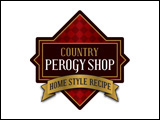A research scientist with the Prairie Swine Centre reports a variety of strategies are being explored for reducing the effects of feeding mycotoxin contaminated grains to pigs.
“Molds and Mycotoxins, What is the Impact and How Can We Minimize It,” was discussed last week as part of the Prairie Swine Centre’s 2016 Manitoba Spring Producers Meetings.
Dr. Dan Columbus, a Research Associate Nutrition, reports mycotoxin contamination can run as high as 75 percent.
A number of different methods to mitigate the effects of mycotoxin have been looked at including the use of binders and absorbents aimed at reducing absorption of mycotoxins in general, to yeast products which also worked at binding and also detoxification in the case of live yeast and also particular blends of antioxidants, preservatives, amino acids, probiotics aimed at a multi-pronged attack and methods to eliminate mycotoxin effects in animals.
At Prairie Swine, in particular, we’ve been looking at the possibility of using spray dried animal plasma as a mitigant. It has effects on feed intake and immune system that are generally positive and may work to mitigate mycotoxicosis.
One of the major concerns with using spray dried plasma, even though it may work, is the inclusion of animal byproducts and animal products in general in animal feeds. This is starting to be frowned more upon and in many of our natural programs that are being introduced by producers will not be allowed in animal feeds. Even though it may work we may have to look at alternatives beyond animal products. ~ Dr. Dan Columbus Prairie – Swine Centre
Dr. Columbus says alternatives to spray dried plasma include live yeast and yeast products and probiotics and the Prairie Swine Centre is looking at liquid whey products in nursery diets to mitigate the effects of mycotoxins.



